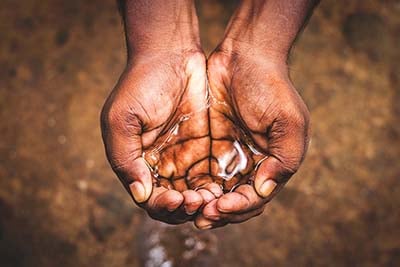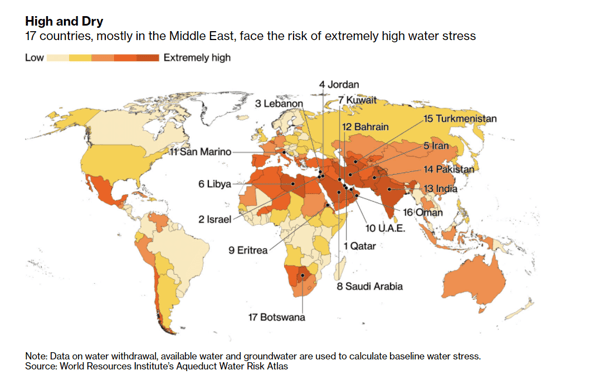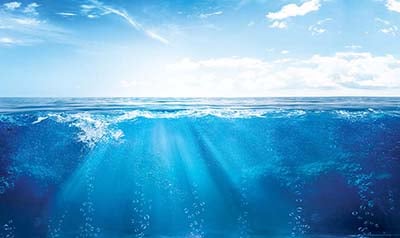You were maybe familiar with gold, oil, and other commodities futures. Why? Because they are scarce resources. Their prices fluctuate and buyers fear not being able to afford their prices. Recently, it seems that water, a resource that, in appearance, looks to be everywhere. Why?
What is a futures contract?
Let us have a quick catch-up for those of you who do not know what a futures contract exactly is.
When you buy a commodity on the spot market, a physical market, or cash market, you purchase the good for an immediate delivery. It means that it is yours, right now.
However, when you buy a futures contract, it means that you agree to purchase a certain amount of a certain asset at a certain price and point in time. It is all predetermined.
On the one side, the buyer has the obligation to buy and receive the underlying asset, and the seller has the obligation to deliver the underlying asset at the specified date.
The difference with an option is that, well, there is no option. The holder of the futures contract must make the transactions, whether the conditions at the time t suit him or not.
In the end, the goal for the buyer is to "lock in" a certain price that he deems fair, or at the very least, acceptable. This way, he protects himself on a sudden price surge. On the other hand, he will lose money if the price suddenly drops, as he will have to pay the previously determined price anyways. The scenario is reverse for the seller, who also get a premium (price of the contract) as payment.
Futures contracts can be on commodities (sugar, crude oil, wheat, soybeans) but also on Forex, precious metals, stocks, or bonds.

Water futures in California
If you are looking for a (very) liquid investment, you are now able to buy a futures contracts for millions of gallons of water on the Chicago Mercantile Exchange. However, the reason behind this new instrument is less funny than I make it seem.
As of today, farmers, hedge funds or any participants can hedge or bet on future water availability in California.
California is the US's largest water market, but its water supply is limited. The state is regularly the victim of droughts, which forces companies, farmers, and cities to turn towards the spot market, where water prices are rising. The Californian water market is worth around $1.1 billion.
To face such shortcomings, they introduced new water futures, which are tied to the California water index, made so that companies and utilities alike can hedge against water shortages.

Water shortages: a global perspective
Why is it a big deal, you may ask? While we are used to having futures on about anything, whether that be wine, olive oil, live cattle or amber, the fact that we are commoditizing an extremely elementary resource does worry some economists.
As of today, more than 2 billion people inhabit lands where water is short, a number that will go up in a near future. Moreover, two-thirds of the world could face water shortages in the next four years.
"Climate change, droughts, population growth, and pollution are likely to make water scarcity issues and pricing a hot topic for years to come," RBC Capital Markets Managing Director Deane Dray told Bloomberg.

Source: Bloomberg
The UN have long warned that climate change was leading to more droughts and floods, which makes water scarcity way more likely in many regions of the world.
While it is easy to think that water is the one resource we will never run out of, as it covers over 70% of our planet, freshwater, which we use to drink or wash, is extremely scarce. Only 3% of the world's water is fresh. The rest is either hidden in glacier or unusable. 1.1 billion people have a hard access to the vital commodity, and it comes as scarce for a month per year to 2.2 billion others.
This can be attributed to three main factors: pollution, agriculture, and population growth. Pesticides, untreated human wastewater, and industrial waste have all an enormous impact on our resources. Agriculture uses 70% of our fresh water because of inefficient systems, drying our lakes and rivers. When we add to this a population that doubled in the last 50 years, the concern of having enough water for everyone only grows.
The result of such was are disappearing wetlands and damaged ecosystems. Half of the world's wetlands have disappeared since 1900. These lands were not only the home of many species but were used by humans to grow food such as rice, one of the most consumed commodities in the world. Furthermore, damaged ecosystem such as lakes that decreased in size, which water is unusable due to heavy pollution, created shortages and even a decrease in life expectancy for nearby population. The situation is very serious.
Key takeaway
Shortages of water are increasing, which will retain more and more concern for the world. Climate change will not be of great help, but we can certainly hope for more innovation to deal with the issue. These new water futures can be seen as a first step.
“Without this tool people have no way of managing water supply risk,” said Clay Landry, managing director at consulting firm WestWater Research, which provides the data used to calculate the water index.. “This may not solve that problem entirely, but it will help soften the financial blow that people will take if their water supply is cut off.”

Sources :
California Water Futures Begin Trading Amid Fear of Scarcity, in Bloomberg
California Water Futures are First to Trade on Chicago Mercantile Exchange, in Morning Brew
Futures Contract, in Investopedia
Water Scarcity, in WWF
Water Scarcity, United Nations Water
These Countries Are the Most at Risk From a Water Crisis, in Bloomberg





